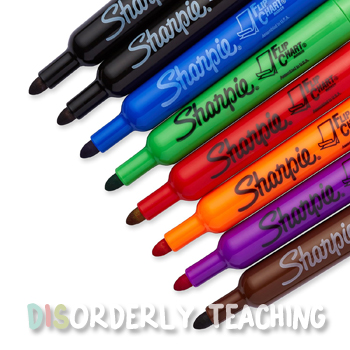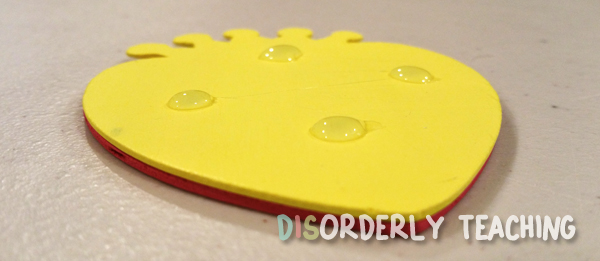Update: Check out my
super simple DIY for your classroom clipboard here.
Today I'm sharing my fire drill procedure with you, to help take the hassle and frustration out of fire drills for my fellow high school teachers.
I imagine in elementary school during a fire drill, all of the little kiddies line up in two straight lines and follow their teacher to perfection, just like in Madeline (
feel free to comment with horror stories if I'm way off there). In high school however, it's a different story; at least where I teach. Students see a fire drill as a break from class and a chance to see friends. We all file out of our building en masse, and students mill around in a giant cluster. Just imagine 16 classrooms worth of teenagers in one clump. (with another 48 classrooms worth outside the neighboring buildings).
Now during a drill this isn't an issue, but in a real emergency it is. As teachers, we need to take roll to make sure all of our students made it out of the building safely. That way we can report if anyone is missing and still inside. Taking roll is impossible in the aforementioned student cluster, so we've taught our students to check in with us as soon as they make it outside.
Teaching this procedure was not easy (
who can resist the lure of friends from another class!) and it took a few years to develop a system that works, but my co-teacher Janice and I are happy with it now.
Teaching the Procedure for Fire Drills
1. Explain the basics of a fire drill to students. This includes the route your class takes and (this is key)
where you want them to meet up. Our building exits to the parking lot behind it, so kids tend to just wander out in random directions. We chose a safe point on the fringe with a clear marker to head towards. In our case we explained "Once you leave the building, move off the grass into the lot, then turn to the left. Walk towards the No Parking sign and meet up with us there."
2. Explain WHY students need to check in. Yes I know teenagers are moody and independent and think they know better. But guess what? If you give them a sound logical reason instead of "because I said so," they are
way more likely to listen. So we tell our students that our job is to make sure they get out safely, and if they don't check in we're going to assume they're stuck in the building. Someone will have to try to find and save them which will waste time that could be spent rescuing people who are in need and could result in people being hurt (or worse) unnecessarily.
3. Give students a way to find you. My students know I love owls, so I put a large bright owl on the back of a clipboard. Our paper attendance is kept on that clipboard (and NOTHING else!) and Janice or I grab it on the way out to take roll outside. We hold the clipboard up high in the air so students can see exactly where we are and check in. It also serves as a visual reminder for those who forgot the procedure.
4. See what happens. As each student checks in with you, check them off on your attendance roster and thank them for remembering to check in. Depending on your school's guidelines have them stick with you or send them on their way. We let our kids go socialize once they've checked in.
I’d love to tell you that without fail that every student will check in no problem. The reality is this last year was my 4th year teaching and it was in one of the last fire drills of the year that we got 100% check in (
told you this system took a while to perfect).
5. Now comes the fun part, especially if you enjoy drama. You want to reward the kids who checked in, and give a vibrant reminder to those who didn’t. So what we do is this:
First, give some form of reward to the students who checked in, like a piece of candy or even just some over the top verbal praise. Next is the reproval for those who didn't check in.
One teacher stays out of the room. The other tells them dramatically that there has been a tragedy. Ms. M or Dr. R (whoever stayed outside) has died. So many students didn’t check in that she ran back into the fire to save them and, alas, she did not make it out. Feel free to ham this up as much as possible. One time the teacher who “died” came stumbling into the room gasping and fell to the floor in a dramatic death scene. The idea isn’t to be morbid, but to be memorable. You’ll be amazed how many students remember the next time that they have to check in.
If you’re not lucky enough to have a co-teacher (and I’m sure most of you don’t), this still works. You literally just tell the class yourself that you died. Even with someone else telling the class, at no point do the students believe that happened, so it doesn’t matter if you’re there in the room, clearly alive as you tell them. Of course if you really want to ham it up, you can tell them everything in your dying breaths from the classroom floor : p
We repeat this procedure for the next few fire drills. Eventually you has very few or even just one student who didn’t check in and we call them out directly (
note: make sure you have a good rapport with your students before doing so). Usually we’ll tell them “Her headstone will say ‘It was [student]’s fault,’” and the kids will all joke about it.
6. The last phase will be when you get 100% check in during a drill. We give the students a big reward (ex: popcorn and they get to watch an episode of a TV show or part of a movie) and also brag about how they are the most orderly class out there during drills.
Remember, as with any procedure, review review review. Everyone forgets things over time, so we need to reinforce throughout the year, no matter how well we taught it in the first place.
Well I hope this post helps you wrangle your kiddos during the next fire drill! Let me know how it goes. If you have any other tips, please share them in the comments below.



























